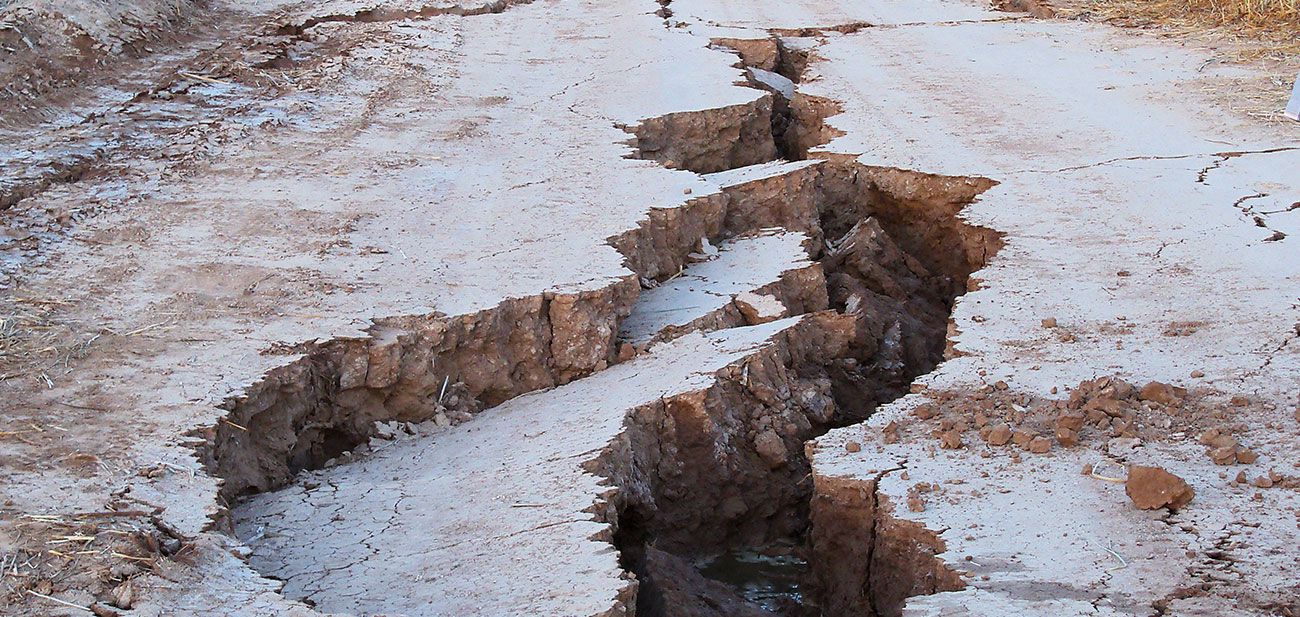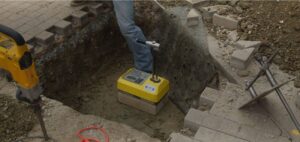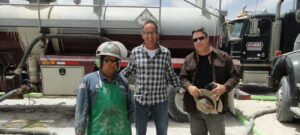
Earthquakes are one of our planet’s most powerful and destructive natural forces. This sudden, violent phenomenon has shaped human history, leaving behind devastation and prompting advancements in science and safety measures. From the ancient destruction of Pompeii to the recent tremors in Haiti, significant earthquakes have always captured our collective attention and spurred humanity to understand better and respond to these formidable events. At G3SoilWorks, we emphasize the importance of understanding and preparing for earthquakes to minimize the impact of the damage caused by earthquakes.
At their core, earthquakes are the result of sudden releases of energy in the Earth’s crust. This release creates seismic waves that cause the ground to shake. Earthquakes can occur anywhere but are most common in areas where tectonic plates—the massive slabs of rock that make up Earth’s surface—interact. These interactions generate immense stress, which is eventually released in the form of an earthquake.
Earthquakes come in different forms, each with unique characteristics. Tectonic earthquakes, caused by the movement of tectonic plates, are the most common and are often the most powerful. Volcanic earthquakes occur in conjunction with volcanic activity, usually preceding or following eruptions. Collapse earthquakes happen due to the collapse of underground caves or mines, often resulting in localized shaking. Lastly, explosion earthquakes are triggered by nuclear or chemical explosions and are typically man-made.
Tectonic plates are constantly moving, albeit very slowly. When these plates grind against each other, they can get stuck due to friction. Over time, stress builds up until it is released in the form of an earthquake. The boundaries where these interactions occur are known as fault lines. Major fault lines, such as the San Andreas Fault in California, are well-known for their seismic activity.
Seismic waves are the energy waves generated by an earthquake. There are two main types: Primary waves (P-waves) and Secondary waves (S-waves). P-waves are faster and travel through both solid and liquid layers of the Earth, causing the ground to compress and expand. S-waves are slower and only move through solids, causing the ground to move up and down or side to side. Understanding these waves helps scientists determine the earthquake’s epicenter and intensity.
The most immediate danger of an earthquake is the violent ground shaking, which can lead to buildings collapsing, roads cracking, and other infrastructure failing. Surface ruptures can tear apart the ground, causing severe damage to anything in its path. This ground shaking can also disrupt utilities, leading to fires, gas leaks, and electrical outages, which compound the initial damage by earthquakes.
Earthquakes often trigger secondary hazards such as tsunamis, landslides, and soil liquefaction. Tsunamis, caused by underwater earthquakes, can devastate coastal regions, flooding vast areas and destroying structures. Landslides, triggered by the shaking ground, can bury communities under tons of earth. Liquefaction occurs when saturated soil temporarily loses its strength, causing buildings to sink or tilt. How do earthquakes cause fires? Understanding this is crucial, as ruptured gas lines and electrical shorts can lead to devastating blazes.
One of the most challenging aspects of earthquakes is their unpredictability. Unlike hurricanes or storms, earthquakes strike without warning. While early warning systems are improving, giving people precious seconds to take cover, predicting the exact time and place of an earthquake remains beyond our reach. This unpredictability makes preparedness even more critical, as it can significantly reduce earthquake casualties and damage.
Earthquakes can cause extensive damage to buildings, bridges, roads, and other infrastructure. They can reduce homes to rubble and severely impact critical facilities like hospitals and schools. The environment also suffers, with landscapes altered and ecosystems disrupted. Trees can be uprooted, rivers diverted, and natural landmarks forever changed.
The economic cost of earthquakes is staggering. Reconstruction can take years and billions of dollars. Businesses may be forced to close, and employment can suffer. The social cost is equally significant, as communities are displaced, lives are lost, and economies are disrupted. The rebuilding process can strain local economies, and the loss of historical or cultural sites can be irreplaceable.
Recovery from an earthquake is a long and challenging process. Beyond the physical rebuilding, communities must address the psychological impact. The trauma of experiencing an earthquake can have lasting effects on mental health, necessitating comprehensive support systems for affected individuals. Counseling and community support programs are essential to help people cope with the aftermath and rebuild their lives.

Preparedness is key to minimizing the effects of earthquakes. By taking proactive measures, individuals and communities can significantly reduce the risks. Preparedness involves understanding the risks, planning, and knowing what to do during and after an earthquake. Education and training can make a significant difference in saving lives and reducing damage.
Implementing and adhering to stringent building codes is crucial. Modern construction practices focus on creating earthquake-resilient structures that can withstand shaking and minimize earthquake building damage. This includes using materials that can absorb and dissipate seismic energy, designing buildings to sway with ground movement, and ensuring foundations are anchored in stable soil.
Technological advancements have led to improved earthquake detection and monitoring systems. Seismometers and GPS technology help scientists track seismic activity and provide early warnings. These systems can detect the initial seismic waves and send alerts to give people a few precious seconds to take cover. Early warning systems are critical in saving lives and reducing injuries.
Engineering and architectural innovations are essential for constructing buildings that can endure earthquakes. Techniques like base isolation and energy dissipation systems enhance the resilience of structures. Base isolation involves placing a building on flexible bearings that absorb seismic energy, while energy dissipation systems use devices like dampers to reduce building movement during an earthquake.
Community education and preparedness programs are vital. By raising awareness and providing training, communities can better respond to and recover from earthquakes. Local governments and organizations can significantly promote earthquake preparedness through drills, workshops, and public information campaigns.
Global cooperation in research and disaster response is essential. Sharing knowledge and resources can help mitigate the impact of future earthquakes. International partnerships and collaborations can lead to advancements in detection, preparedness, and response strategies, benefiting communities worldwide.
Governments play a crucial role in earthquake mitigation through policy-making and investment in infrastructure and research. Supporting policies enforcing building codes and funding scientific research can save lives and reduce economic losses. Investments in public awareness campaigns and emergency response systems are also critical.
Individual and community preparedness efforts are critical. By taking action, we can build resilient communities that are better equipped to face the challenges posed by earthquakes. Simple actions like securing furniture, creating an emergency plan, and assembling an emergency kit can make a significant difference.

Understanding and preparing for earthquakes is vital for minimizing their impact. By educating ourselves, investing in resilient infrastructure, and fostering a culture of preparedness, we can protect lives and build stronger, more resilient communities. At G3SoilWorks, we support these efforts and encourage you to take action today to ensure a safer tomorrow for you and your loved ones. Engaging in preparedness activities and supporting community resilience efforts can make a significant difference in the face of these natural disasters. For more information on how to reduce the damage caused by earthquakes, call us at +1 714-668-5600.
Q1: What is the role of seismologists in earthquake science?
A: Seismologists study earthquakes and the movements of the Earth’s crust. They analyze seismic data to understand earthquake patterns, identify fault lines, and develop models to predict the potential impact of future earthquakes. Their research is essential for improving early warning systems and guiding construction practices.
Q2: Why do earthquakes occur more frequently in certain areas?
A: Earthquakes occur more frequently in areas where tectonic plates interact, such as along fault lines. These regions are prone to seismic activity due to the constant movement and collision of plates. Examples include the Pacific Ring of Fire and the San Andreas Fault in California.
Q3: What is an early warning system for earthquakes, and how does it work?
A: An early warning system for earthquakes detects the initial seismic waves (P-waves) that travel faster but cause less damage than the slower, more destructive secondary waves (S-waves). Sensors detect the P-waves and send alerts to people and automated systems, providing crucial seconds to take protective actions, such as shutting down utilities or evacuating buildings.
Follow, engage, learn. Stop by our blog to see what’s happening at G3SoilWorks.
G3Soilworks – a full service geotechnical/ engineering geologic consulting firm serving clients since 2009 and delivering expert solutions with our highly experienced team and specialized consultants.
G3SoilWorks
350 Fischer Avenue Costa Mesa, CA 92626
Tel. 714.668.5600
E. info@g3soilworks.com